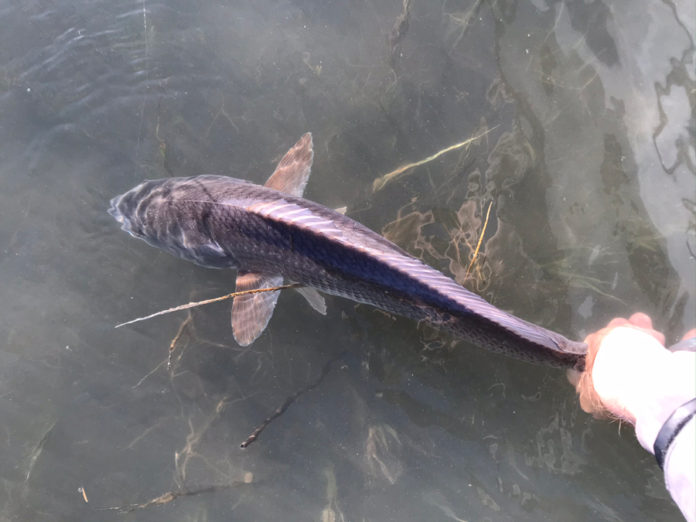Written by: Capt. Cleve Hancock and Evan Jones
The South Carolina lowcountry is one of the most distinctive saltwater fisheries in the region, particularly when it comes to chasing redfish. Famous for flood tides, during which hungry fish push into the Sawgrass marshes to chase previously-unavailable crabs, the low country can be incredibly productive for fly anglers who find themselves in the right places at the right times.
In order to learn how to achieve that feat more consistently, we sat down with Capt. Cleve Hancock of Brown Dog Sportfishing out of Charleston. Below, he takes us through a step-by-step process describing the “what, where, how and when” of fly-fishing for reds in the low country.
1. Find Hard Bottom
The crabs that the redfish are chasing need a hard bottom to construct their burrows, which really narrows down what to look for in the marsh. Hard bottom will typically be a lighter color than the surrounding mud, due to higher sand content, making it easy to spot. Even if you can’t see the bottom, it should feel firm each time the push pole touches down, as opposed to the soft “pluff” mud that makes up much of the marsh. A hard bottom will also allow you to pole your boat or wade much easier. While mud is unavoidable, if you find your feet sinking much past ankle-deep, that’s too soft.
The first step to finding hard bottoms is to pull up a satellite image and look for the lighter-colored areas. You’ll often find hard bottoms in areas near islands or mainland shorelines. As you scan the marsh in person, you may also notice some distinct differences in grass height. As a general rule, shorter grass will indicate a harder bottom.

2. Approach via Feeder Creeks
No matter how good the flat looks, the fish still have to get to it. Feeder creeks are the “residential roads” that lead fish up onto the flat as the tide rises, creating choke points that they must pass through. These creeks are often lined with taller grass, helping them stand out. The slightly-deeper water in their channels will also help you get your boat up onto the flat and back. Be aware, however, that if there are only one or two feeder creeks onto the flat, you may want to wait until the tide is slightly higher to avoid spooking the fish as they make their way in. As the tide begins to recede, the fish will retreat toward these same creeks again on their way out, creating the same opportunities for ambush.
3. Arrive Early
I usually find the fish more active in the earlier stages of the flood tide. Don’t be afraid to get there early for shots at the first wave of fish coming onto the flat. It is also a great way to see the contours of the bottom so that you can pick out areas that will be deeper when it all gets flooded later on. The majority of our “tailing tides” occur around a full or new moon phase when water levels are highest. Overall I have found more activity just before these lunar extremes, as opposed to just afterward.
While high water is certainly key, too much water on a flat can make the fish difficult to spot. This can be avoided by arriving early and catching the fish during lower water, or by varying the flats you fish based on tide height. One advantage of fishing in the Charleston area is that our river systems have different peak tide heights, depending on location: flats closer to the mouths will flood earlier than flats farther upriver. Moving upriver to areas with a lower tide height can keep you fishing longer.
Capt. Cleve Hancock owns an operates Brown Dog Sportfishing, based in Charleston, South Carolina. Evan Jones is the assistant editor of the Orvis Fly Fishing blog. He lives in Colorado.
Credit: Source link































